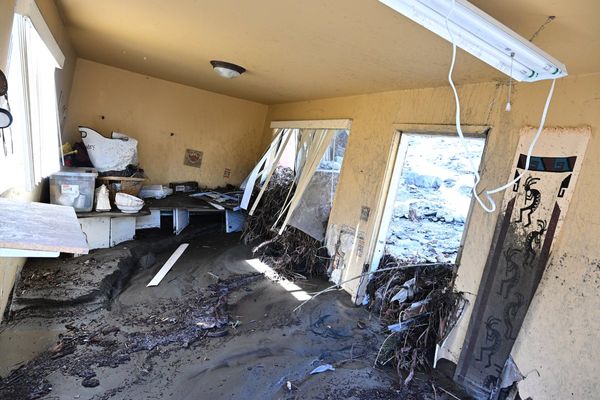In the heartland of Andhra Pradesh’s Prakasam district lies a treasure trove of historical engravings, each bearing witness to bygone eras and forgotten tales. Amongst the sprawling fields and quaint villages, the Archaeological Survey of India (ASI) has unearthed remnants of a rich past etched in stone.
The archaeological odyssey in the district begins with the discovery of inscriptions that throw light on Gangaya Sahini, a figure shrouded in the mist of time and brought to life through the meticulous deciphering of the inscriptions at Ayyambotlapalli and Boyalapalli. They narrate the saga of the first ruler of the Kayastha dynasty, which stretched from Telangana’s depths to Karnataka’s verdant landscapes.
Through the skilled interpretations of K. Munirathnam Reddy, Director of Epigraphy at ASI, Mysuru, we are transported back to the Kayastha era.
An inscription dating back to C.E. 1262 hints at the final days of Gangaya Sahini, while another discovered at Boyalapalli unveils the benevolence of a ruler who bestowed lands upon deities and monarchs alike—a testament to the king’s genius ability to balance faith and governance during his reign.
But the chronicles of Prakasam’s past extend beyond the reign of Gangaya Sahini, delving into the annals of Vijayanagara’s glory and the dawn of Telugu civilization.
From the humble hamlets of Gollavidipi to the sacred precincts of Venkatadripalem, each inscription gives a window to an era, where kings ruled with iron fists and gods held sway over mortal affairs.
Ayyambotlapalli
Gangaya Sahini’s stone inscriptions at Ayyambotlapalli village suggest that Gangayya Sahini died in C.E. 1262, Mr. Munirathnam Reddy said.
Gangaya Sahini had an association with Ganapati Deva, a monarch of the Kakatiya dynasty. In a book authored by Nelaturi Venkataramanaiah, it was mentioned that the Kayastha rulers expanded their kingdom from Panugallu in the present Nalgonda district in Telangana to Chintamani near present Kolar in Karnataka. It is believed that these Kayasthas migrated from Maharashtra to Andhra Pradesh for various reasons.
Mr. Munirathnam Reddy explained that the inscription was written in Telugu language and dated [Saka 1184] Dundubhi, Bhadrapada, Su 15, Thursday, Lunar eclipse, which is August 31 in C.E. 1262.
The inscription records the gift of the village Guduru (after exemption from all taxes) along with Sada-Sunkam to the God Srigiri (Mallikarjuna Deva of Srisailam) by Satrayya for the merit of Gangaya Sahini (C.E. 1239-1257) on the occasion of a lunar eclipse. The responsibility of protecting the gift was entrusted to Hallisetti, a person at that time,” said Mr. Munirathnam Reddy.
Boyalapalli
Another inscription from the 12th century unearthed at Boyalapalli village, records ‘the gift of lands’ as ‘sarvamanya’ (universally acknowledged) in the villages of Redlapalli and Boyalapalli, for conducting the ‘angaarangabhogas’ ritual to the deity of Mulasthana Deva of Tripurantakam by Gangaya Sahini, according to Mr. Munirathnam Reddy
Mr. Munirathnam further informed that Gangaya Sahini donated lands for the merit of Kakatiya king Ganapati Deva, his parents, his grandmother and himself on the occasion of Makara Sankranti, if stone inscription found in the tank near the village Boyalapalli was of any indication. “It is written in Telugu language and characters, and dated in Saka 1172, Sadharana, Pushaya, Su-5, Thursday, which translates to C.E. 1250, December 29,” he said, adding that there are a total of 26 lines written on this inscription. Therefore, it is a primary source of information on the history of Gangaya Sahini.
Devaraya II
Moving ahead in the timeline by over two centuries, the Prakasam district could be found to be reigned by Vijayanagara king Devaraya II. A stone inscription found in the Nallamala forest on the outskirts of Ponnalabailu villageaffirms the same.
The Epigraphy Director of ASI said that the inscription written in the Telugu language dated back to ‘Saka 1358, Nala, Kartika, Su 9’, which means Thursday, October 18 of C.E. 1436. and records the gifting of a piece of land to the god, probably Mallikarjuna Deva of Sriparvata, by the king.
Early Telugu inscriptions - Bopanapalli
Prakasam district also safeguards in itself a couple of early Telugu inscriptions dating back to the 8th and 9th centuries, engraved on fragmented and broken pieces of stone slabs found in the agricultural fields of Bapanapalli village (Ramachandrapuram-Agraharam). The script on them is in Telugu and record the gift of land and a house to God.
Mr. Muniratnam Reddy explained that there is a word—’Pannasa’—on the inscription, which means wetland. He said that in the same inscription, it is written that a piece of wetland and a house were donated by Dandiyama to the God Sri Umaravaiyidisvara. The God was praised as Kailasabhagavanta, which means comparing the Lord to Kailasa Siva, as per the inscription. These donations happened when Sri Tripurantaka Bhatalu, bearing the title Makaradvaja, was administering the region.
The inscription further mentions ‘mandugrama’, and he said more information on the characters is needed to understand the inscription completely.
In another inscription, the title of a ruler is mentioned as Sameyaraditya Trilokaditya. Apart from these two, four other stone inscriptions were also traced to the same village, and the ASI has copied them as well, he said, adding that the ASI identified inscriptions with similar characters at nearby places like the Ramalingeswara temple at Ayyambotlapalli village and Gollavidipi village.
Vutlu
Two fragmented Telugu inscriptions from the 8th and 9th centuries were found in agriculture fields at Gollavidipi village. Mr. Munirathnam Reddy opined that these inscriptions appear to be the oldest ones discovered so far and would be helpful in identifying the origin of the Telugu language and characters.
One of the inscriptions recorded the gift of six Vutlu of land to a Brahmana named Kulabhatta of Kotipura by Sri Kamulkoli, in characters of the 8th century. The other inscription refers to the reign of the king Sri Vijadi, in characters of the 9th century, he explained.
‘Vutlu’ means a piece of land on which ten bags of paddy could be cultivated, as per the local usage. The ASI has identified a total of five inscriptions in the same village and they have decoded the information on them.
Another inscription engraved on a slab found on the roadside at Venkatadri Palem village is written in Telugu language and characters, dated Saka 1404, Subhakrit, Vaishaka Su 1 which is equal to April 19, C.E. 1482. It records the gift of a village Singavaram by Mahamandalesvara Anivaranasimharavu Ramerayadeva Maharaju, for the merit of his mother and father Singarayya. Further, it records the gift of the taxes such as ‘Kattnam’, ‘Kanike’ and ‘Vetti’ as a ‘sarvamanya’ to the same donee.
Kalujurattnam
A Telugu inscription engraved on a stone was found in the village Boyalapalli, dated Saka 1500, Bhahudhanya, Adhika Asvija, Su 15, Somagrahana, which translates to Monday, September 15, C.E. 1578.
It records the construction of a temple, installation of the god Virupakshadeva, whitewashing of the temple, digging of a tank, and building of a weir with pulley—kalujurattnam—in the village by Kondappanayani, brother of Vobappa and son of Pedda Timmanayani of Veligoti on the occasion of the lunar eclipse.
Further, it records the gift of lands in the villages viz., Boyalapalli, Golladipi and Ganaparam for lighting a perpetually burning lamp and providing food offerings to the god.
Pillar inscription at Gollavidipi
An inscription engraved on a pillar, found in the fields of the village Gollavidipi, Yarragondapalem andal, is written in Telugu language and characters of 16th century C.E., and dated in Bhava, Sravana, Ba 5. It records the construction of a tank and the digging of a well in the garden at Tripurantakam by Jangam Mallaya of Guduru. Details of Jangam Mallaya are yet to be established by the ASI.
Another fragmented stone from Gollavidipi has damaged characters of Telugu script dating back to 9th century.
Hero stone of Tripurantakam
A hero stone inscription from Tripurantakam, engraved on a slab, is written in Telugu language and characters and dated in Saka 1371, Sukla, Chaitra, Ba.13, which means Sunday, April 20, C.E. 1449. It records the death of a hero named Tima, son of Pogireddi, in a battle at Pullalacheruvu. Further, it mentions the king of Pullalacheruvu (name not mentioned) and Mallikarjuna Deva.
Exploration by ASI
A team of specialists from the ASI has copied around 30 stone inscriptions in and around the Yerragondapalem mandal in the Prakasam district in the second and third weeks. In fact, all these stone inscriptions have been overlooked by the department so far for various reasons.
Estampage is the method used by archaeologists to copy the characters and symbols from inscriptions. In this technique, an exact imitation of an inscription is obtained on an inked paper and then used for further analysis.
On this occasion, Mr. Munirathnam Reddy observed that the information gained from these sources could be corroborated with information from other sources in order to provide an insight into the dynastic history of the region.
The inscriptions play a greater role in establishing the truth and facts of history, and hence, protecting them is an important aspect, observed Mr. Munirathnam Reddy. He added that if we lose an inscription, it is a loss forever. He suggested protecting, preserving and sharing information about the inscriptions at the nearest ASI office for copying.
Exploration of the Prakasam district’s ancient inscriptions leaves one with a profound appreciation for the rich history and the land’s cry for the preservation of these silent witnesses of a glorious past for future generations to cherish.







